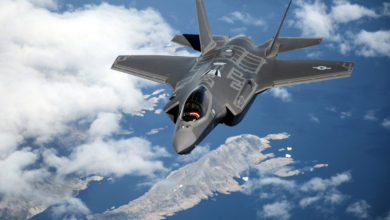USAF Evaluates F-15E Cockpit Readiness for Chemical Attack
The US Air Force carried out an in-flight vapor purge test in an F-15E Strike Eagle last month.
The test is a part of a broader Pentagon effort to evaluate the cockpit environment after a chemical attack, leading to improved protective gear development. More aircraft will be assessed in the coming years.
In the recent test, liquid methyl salicylate, a common ingredient in mint candies, was sprayed into the idling jet prior to taxi to simulate a chemical weapon attack, the service said in a statement.
The engine heat vaporized the chemical, and it flew into the cockpit, exposing the crew.

In-Air Chemical Purge
Later, the aircraft’s environmental control system activated while airborne, purging the gas. It allowed the aircrew to complete their mission without “chemical/biological protective ensembles and respirators,” the service stated.
“The data helps us understand what goes on inside the aircraft when operating after a chemical weapon attack and flying in a contaminated environment,” senior chemical, biological, radiological, and nuclear analyst William Greer said.
“What we learn ultimately helps inform aircraft design teams on opportunities to enhance aircraft environments and, along with better aircrew equipment, enable aircrew to execute their missions more effectively in a chemical threat environment.”
Next-Gen Aircrew Protective Gear
The test measured the duration of the purge. Another element of the trial was exposing the aircrew to various chemical simulants to find any leakage or hot spots.
“Each aircraft is different in size and air capacity, which contributes to how quickly the chemical is purged from the aircraft,” 28th Test and Evaluation Squadron test engineer First Lieutenant Andrew DeNicola said.
“Even a small change in aircrew dexterity can affect how the plane flies or types of mission they can accomplish, so if we can minimize the time frame a member has to wear their protective gear it will improve operational Tactics, Techniques, and Procedures.”












